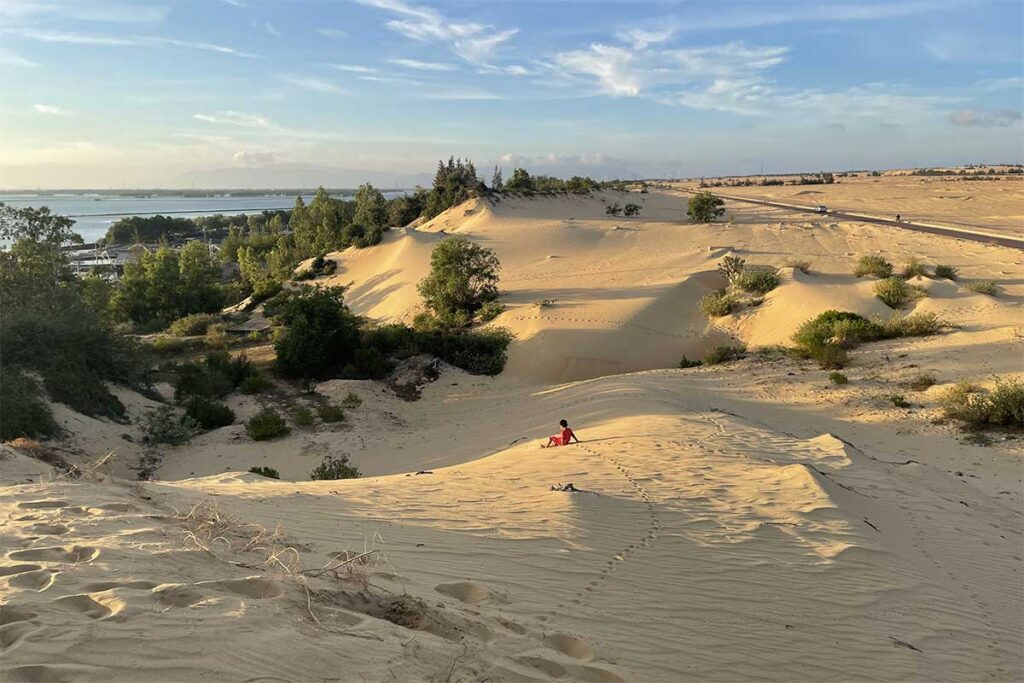What are the Phuong Mai Sand Dunes?
The Phuong Mai Sand Dunes sit on the Phuong Mai Peninsula, about 20 kilometers from Quy Nhon. They stretch across a barren coastal strip between fishing villages and beaches, making them one of the more unusual landscapes in the area.
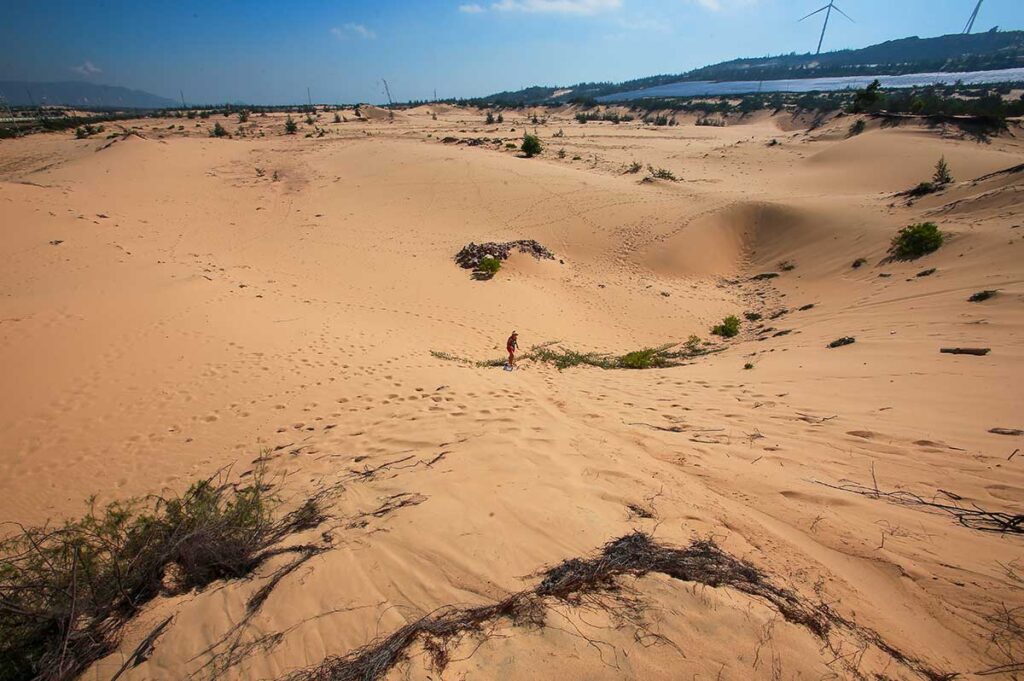
The dunes rise and fall in uneven waves, with some slopes reaching around 20–30 meters and a few peaks closer to 100 meters above sea level. From the higher ridges you can look out over the sea and the surrounding hills.

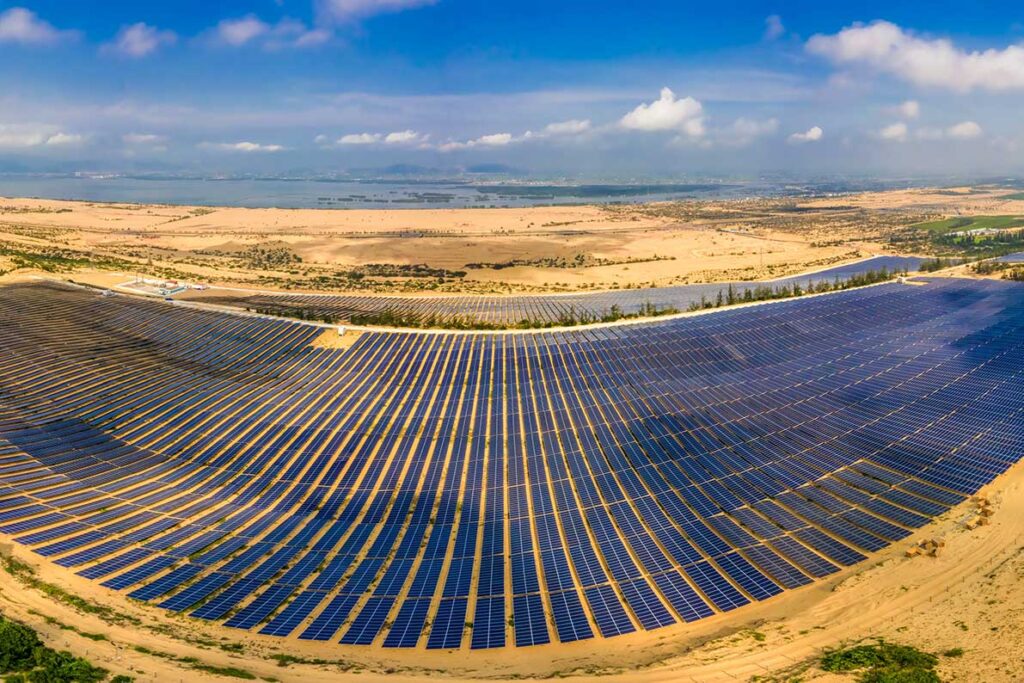
Much of the Phuong Mai Peninsula is now used for renewable energy, with large wind turbines and solar panel farms spread across the sandy terrain. In some places, the dunes themselves border these projects, so you may see towering blades slowly turning above the horizon or rows of solar panels catching the sun
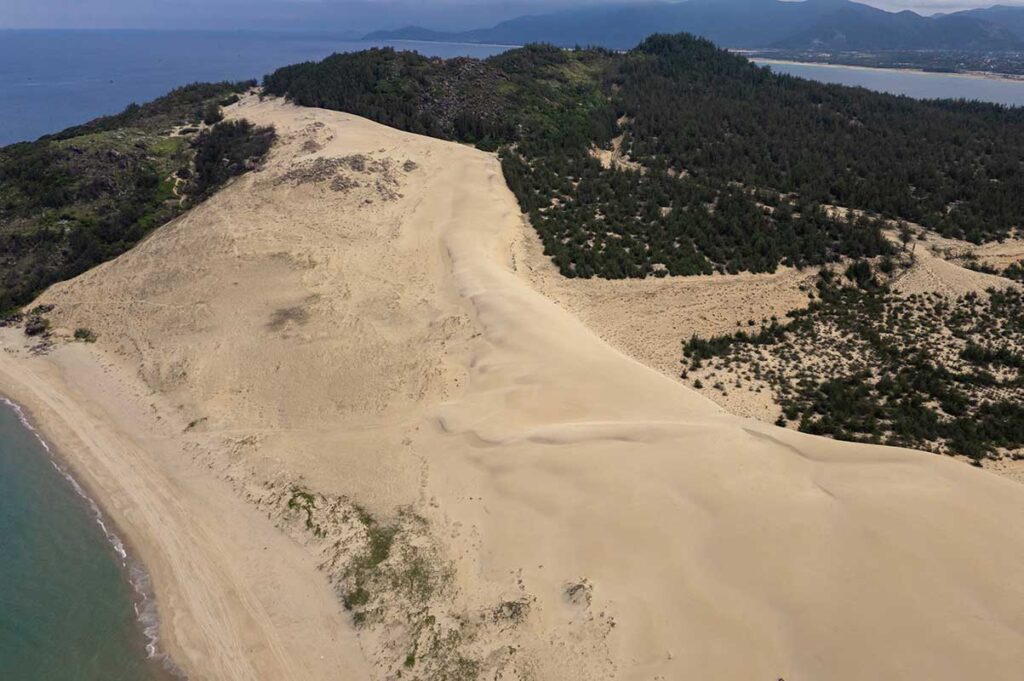
The sand itself is a mix of golden and pale tones, constantly shifting with the coastal wind. Unlike Mui Ne in southern Vietnam, which has become a destination in its own right with plenty of organized activities, Phuong Mai remains relatively undeveloped. That means no crowds, little infrastructure, and a more natural, open feel—but also less to actually do once you arrive.
Things to do at Quy Nhon’s sand dunes
Beyond walking, taking a few photos, or sliding down a slope, there isn’t much else to do. These are not the Mui Ne sand dunes with its organized activities and tourism infrastructure. Phuong Mai works best as a quick stop along the way to other sights on the peninsula, not as a destination to spend hours at.
1. Wander and take in the views
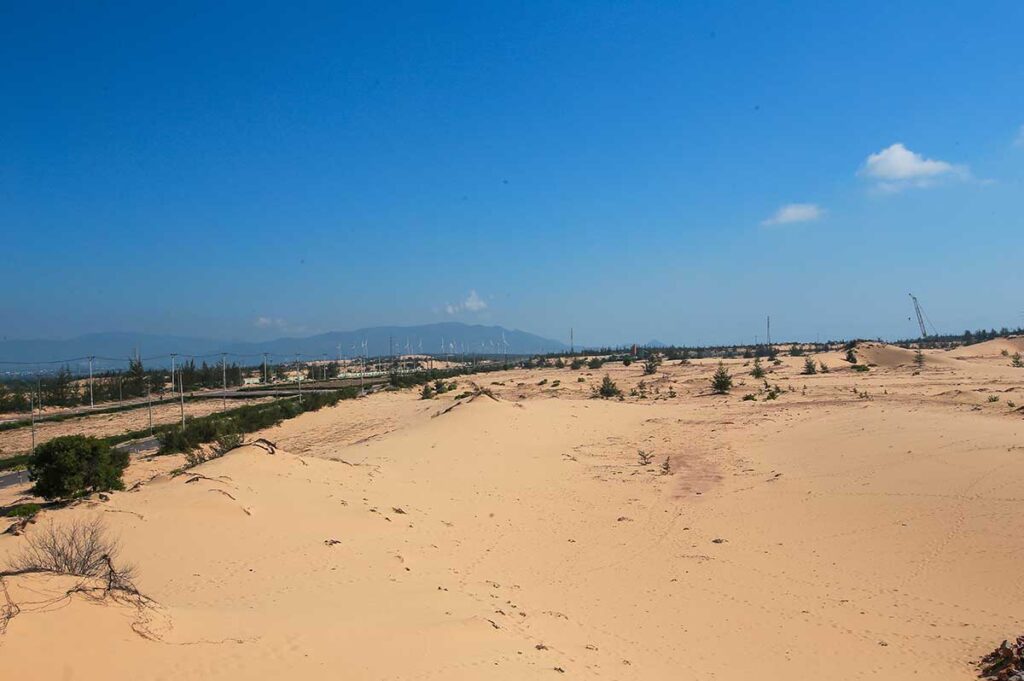
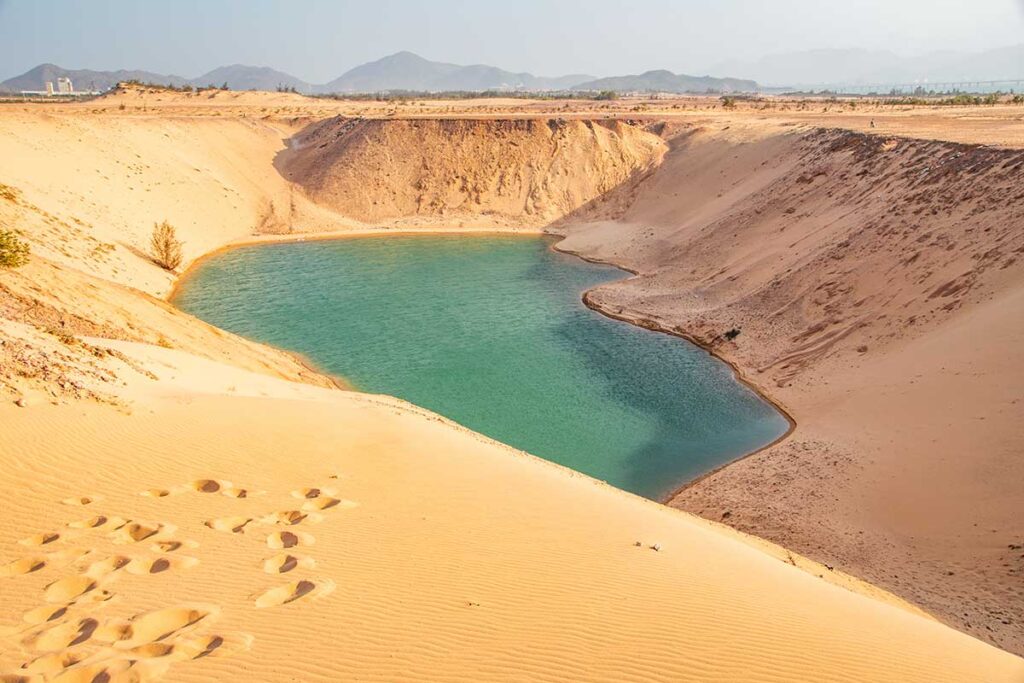
Most visitors come here simply to walk across the rippling dunes and enjoy the wide, open horizons. From the higher points you get a mix of desert-like scenery and coastal views, with the sea and nearby hills forming a dramatic backdrop. It’s a peaceful spot for a short stroll, but the climb up and down can be tiring in the heat.
2. Sandboarding
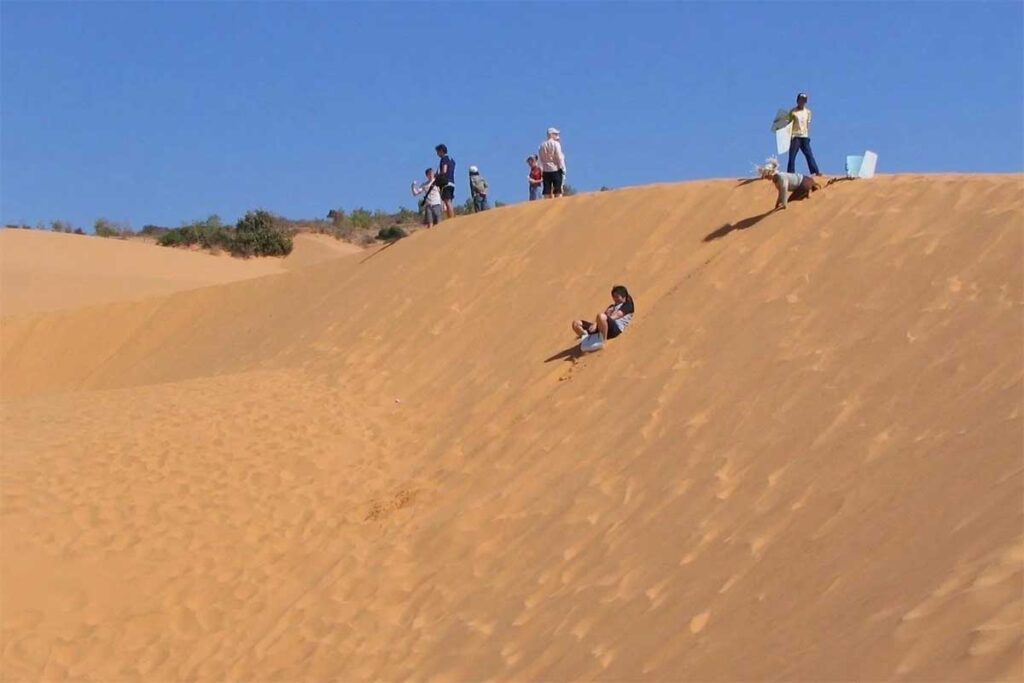
Some of the steeper dunes, with drops of 20–50 meters, are suitable for sandboarding. Boards aren’t always available though—sometimes tours provide them, and occasionally locals rent them out, but it’s not something you can count on. If you do get the chance, it’s a fun way to experience the dunes for a few runs before moving on.
3. Photography
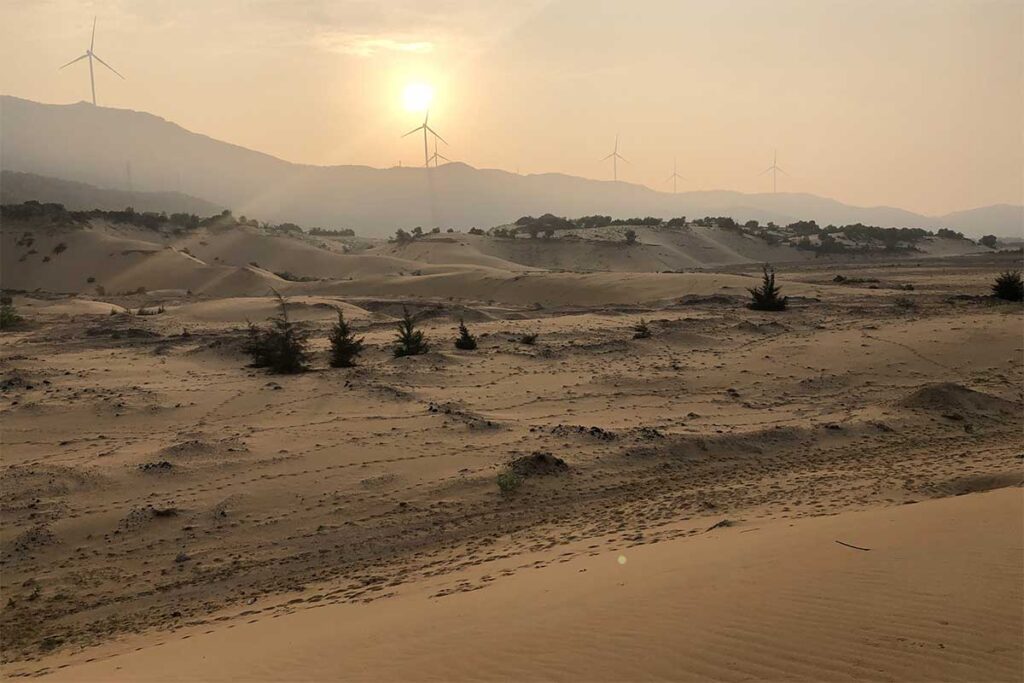
The dunes are at their most photogenic in the early morning or late afternoon, when the light casts long shadows and the sand takes on golden tones. Drone users in particular will find the patterns and shapes created by the wind striking. Wide shots can capture both the dunes and the row of wind turbines turning on the horizon, which adds a unique contrast to the landscape.
Location and getting there
Where are the Phuong Mai Sand Dunes?
The dunes are on the Phuong Mai Peninsula, about 20 kilometers northeast of Quy Nhon city center. To reach them you cross the long Thi Nai Bridge, then follow the coastal road towards Nhon Ly or Nhon Hai fishing villages. They sit just off the main road, close to the sea, so you’ll likely pass them if you’re visiting nearby sights such as Ky Co Beach or Eo Gio.
Taxi or Grab
The simplest option is to arrange a taxi or Grab car from Quy Nhon. Because the dunes aren’t a major landmark, it’s best to show the driver a map pin rather than relying on the name alone. You can add them as a stop on the way to other attractions like Eo Gio, Ky Co Beach, or Nhon Hai Village. If you’re only traveling one way, ask the driver to wait for you or arrange your return, as it can be difficult to find a taxi out here.
Car with driver
Hiring a private car with driver is a comfortable option if you plan to explore the peninsula more thoroughly. Drivers usually offer fixed itineraries that combine the dunes with nearby highlights, and the set price means you don’t need to worry about negotiating or finding transport between stops. It’s also less stressful than arranging multiple Grabs or taxis in a relatively undeveloped area.
Renting or driving a motorbike
Motorbike rental is common in Quy Nhon and offers the most freedom. The roads on the peninsula are generally quiet, with only occasional tour vans or local traffic, making for an easy ride compared to busier parts of Vietnam. Officially, you need an international driving permit to be insured, though many travelers ride without. Keep in mind that there’s no formal parking area at the dunes—just sandy roadside spots—so don’t leave valuables unattended if you’re on a bike.
Practical information & tips
Best time to visit during the day
The dunes are most comfortable in the early morning, when the air is cooler and the light is soft. Late afternoon is another good time, especially for photography, as the low sun creates long shadows across the sand. Try to avoid midday, when the heat and glare can make walking unpleasant.
Conditions to expect
The area is completely open with no shade at all, and the sand reflects the sun strongly. It can get hot quickly, even outside of summer. Bring a hat, sunglasses, sunscreen, and enough water for your visit.
Facilities
There are no facilities at the dunes—no toilets, no cafés, and not even a formal parking area. Come prepared and don’t expect the kind of services you might find at other tourist spots.
Accessibility
The dunes are located just off the main road, so reaching them is straightforward. However, climbing up the sandy slopes can be tiring, especially in the heat. A short walk is required, but there are no marked paths or infrastructure.
Nearby attractions
Most visitors combine the dunes with other sights on the peninsula, which are generally more rewarding:
- Eo Gio – rugged coastal cliffs and viewpoints.
- Ky Co Beach – one of Quy Nhon’s most famous beaches, with white sand and turquoise water.
- Nhon Hai Fishing Village – a relaxed seaside village known for snorkeling and fresh seafood.
Are the Phuong Mai Sand Dunes worth visiting?
Whether the Phuong Mai Sand Dunes are worth a stop really depends on your expectations. They are unique within the Quy Nhon area and give a different perspective compared to the beaches and fishing villages nearby. However, they are not as large or dramatic as the dunes in Mui Ne, and there is little infrastructure or organized activity here.
For most travelers, the dunes make a nice quick stop—perhaps 20 to 30 minutes to walk around, take photos, or try sandboarding if a board is available. They are best appreciated by first-timers who’ve never seen sand dunes before or photographers looking for coastal-desert contrasts.
On their own, they don’t justify a dedicated trip, but they fit naturally into a day exploring the Phuong Mai Peninsula, especially when combined with nearby highlights like Eo Gio, Ky Co Beach, and Nhon Hai Fishing Village.
